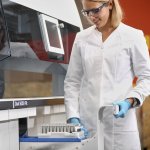
Article • Seeing the advantages
Digital pathology adoption accelerates
Digital pathology (DP) is a game-changer in the workflow, functionality and accessibility of a hospital’s pathology department. As pathologists understand the benefits, and the availability of commercial products and systems increase, alongside data transmission and storage costs decreasing, DP deployment in hospitals is accelerating. Pathology informatics expert Anil V Parwani MD PhD discussed…


























